Tomb Raider – Karl Stewart Interview
by Edward
 After the dust had settled over this year’s E3, many pundits found themselves joking about the line-up’s immense amount of sequels, reboots and gun-play. Yet, one such reboot managed to stand head and shoulders above anything else I’d seen at the event, and I proudly named Crystal Dynamics’ Tomb Raider my personal game of show. Doing away with the once-busty and steely demeanoured heroine and replacing her with a young girl completely out of her depth and forced to resort to extreme measures, grabbed me in a way I didn’t think possible, and left me more excited than anything else the expo had to offer. Thus, when the opportunity arose to interview Karl Stewart – the brand manager at Crystal Dynamics, I snapped it up with glee.
After the dust had settled over this year’s E3, many pundits found themselves joking about the line-up’s immense amount of sequels, reboots and gun-play. Yet, one such reboot managed to stand head and shoulders above anything else I’d seen at the event, and I proudly named Crystal Dynamics’ Tomb Raider my personal game of show. Doing away with the once-busty and steely demeanoured heroine and replacing her with a young girl completely out of her depth and forced to resort to extreme measures, grabbed me in a way I didn’t think possible, and left me more excited than anything else the expo had to offer. Thus, when the opportunity arose to interview Karl Stewart – the brand manager at Crystal Dynamics, I snapped it up with glee.
There’s a much darker tone in the reboot, what inspired that over retaining Lara’s original character?
So, as a studio we made a decision back when we were building Underworld that we wanted to put our mark on the franchise. We had inherited it from Core Design, we had continued the canon that was set for us, but, when we started looking at it, we started to realise that, to us, we wanted to make the franchise culturally relevant again. We wanted gamers and players to feel like it was Lara Croft and the tomb raiding of today. In order to do that, when you look at the landscape around us, there’s a lot of, a lot has happened, a hell of a lot has happened in 16 years, but a lot has happened in recent years in storytelling and narrative and immersion, and really building that sort of story where people will feel a connection with the character during what’s going on.
 When we started looking at how we bring emotion into the game, we realised that in order to do that we have to be willing to go to a darker place than a T rating would allow us. Now we’re an M-rated game, really; with the wrapper of survival around the entire game we started looking at how we can use moments to start bringing in a very different style of gameplay and storytelling to the fray. So I think the darker side wasn’t really our intention to go “let’s go darker”, it was more “how do we bring a very personal and a very human aspect back to our character?”, and in order to do that, you start to come across situations that you wouldn’t traditionally in a videogame and you certainly wouldn’t see in a Tomb Raider game. It was more a decision about the storytelling and how it then naturally progressed that way rather than “hey, we wanna make a darker game”.
When we started looking at how we bring emotion into the game, we realised that in order to do that we have to be willing to go to a darker place than a T rating would allow us. Now we’re an M-rated game, really; with the wrapper of survival around the entire game we started looking at how we can use moments to start bringing in a very different style of gameplay and storytelling to the fray. So I think the darker side wasn’t really our intention to go “let’s go darker”, it was more “how do we bring a very personal and a very human aspect back to our character?”, and in order to do that, you start to come across situations that you wouldn’t traditionally in a videogame and you certainly wouldn’t see in a Tomb Raider game. It was more a decision about the storytelling and how it then naturally progressed that way rather than “hey, we wanna make a darker game”.
It’s interesting that you said you want to make a more culturally relevant Lara, do you think that had you kept the same Lara from the previous games that she wouldn’t have survived in today’s gaming market?
I think it would have been very hard for her to continue surviving. I think there’s a lot of fans who would continue to buy and play the game, but I think that outside the iconography and the world that she lived in, I think in terms of gameplay, we had evolved a hell of a lot in the last few years. I think the traversal system and the combat system, certainly, we felt were very dated, so therefore in order to make a very competitive game that has mass appeal, it was something we knew we had to do.
Some pundits in the UK claimed they didn’t like the change to the character because they liked how Lara was a blank slate that they could project themselves onto. Do you think it’s tough creating a story that will make her a strong female character everyone can get behind?
No, I think in terms of that, we love Lara Croft, we love who she was, we made the decision to say that, blank slate or not, we want to project this narrative and this story and give a fresh entry point for the franchise, give a chance for the players who’ve never played Tomb Raider before, and for fans to feel like this is the Lara of today. We’re never going to please everybody, but we believe this is the right direction for us to take the franchise, one that is going to bring something unique and something very different and will stand the test of time and allow us to build the franchise going forward.
How much backtracking are we looking to see in the game? It’s quite an open world, and in the early section where you first kill a deer and have to take it back to the camp, I found a box hidden away that I couldn’t open yet because I didn’t have the pry tool. Am I going to have to wait until another play-through to go back and open that up?
No, not that at all! What we’ve done is built a section of hub systems as well as the compliment of a base camp system, so the base camps allow us to move around the world with ease. We can move backwards, we can’t move forward to later on because we have a story to tell, but take that prying axe for instance, as soon as you get given it, which we all know because we showed that off last year, your thoughts should say “I want to go back and find out what was in that” if you want to be a completionist. So it’s about re-exploring spaces, it’s about giving the player the opportunity to be able to find new things, discover new things and have some fun, and I think the hub system is a real opportunity to allow the player to explore and not feel like it’s a linear story all the way through.
 How difficult is it to create a story around the hub system when you have a certain story you want to tell, but you want to encourage players to take their time and keep exploring?
How difficult is it to create a story around the hub system when you have a certain story you want to tell, but you want to encourage players to take their time and keep exploring?
The first goal of the hub system was to bring exploration to the forefront; Tomb Raider games in the past say that it was all about exploration, but you never really got to explore. It was a very linear play-though, albeit, it was very exploration as in you travel the world. To us, it felt like, why shouldn’t we be able to have a character that can stay in one place and truly explore and move around? So we started to look at the hubs as, first and foremost, a way to say that you can come in at a certain point and you can have your objective, but there are many different ways of getting there.
You can jump from building to building – it’s not ledge jumping, it’s more dynamic – and then we started looking at the spaces and thinking that with our salvage system, you’re going to be able to upgrade your tools. You don’t want to give everyone everything at once, you want them to upgrade them over time, and then, with the addition of the basic hub system and the fast-travel system, we thought, what if halfway through the game she got ‘x’ item, why wouldn’t we allow her to go back to that hub, and she can now get to higher ground and can get into a place she hasn’t been before? It kind of fluidly came together and it just made sense that the hub systems that allow so much more than a space to tell a story became somewhere where we felt that you could enter them in many different ways at many different times. They organically grew to where we are now, as a way to say we can offer something very different and very unique inside of our games.
 I had a peek at some of the achievements during the demo, and there were only three, but I noticed that they were all for completing tasks within a single play-through. Is this a game where, once the credits have rolled, you’re going to want to go back and do more?
I had a peek at some of the achievements during the demo, and there were only three, but I noticed that they were all for completing tasks within a single play-through. Is this a game where, once the credits have rolled, you’re going to want to go back and do more?
Yeah, we started to look at it by saying yes, the story is very emotive, so there’s a lot of people that even in play-testing want to get stuck in from start to finish and don’t care about everything else, but as soon as it’s done they say “I know I missed loads of stuff” and want to go back in there. There’s loads of replayability inside our game; if you’re a completionist it’s going to take you quite a while, we have a lot of stuff in there.
Another one of the achievements mentioned something about different ammo types, is that going to be something for just the bow and arrow, or are there going to be alternative types of weapons for pistols and machine guns?
At this early stage I wouldn’t necessarily go by too much that’s in the demo. That build’s from back in June and it’s evolved a lot since then. The idea is to be able to give a light RPG-style to the game, and you can tell from the base camp how you can upgrade and how you can improve your character. We don’t want it to be just be a straight “here’s your character, here’s what you get” player choice, and ammunition’s a big part of it, and so is your bow that you’re salvaging and upgrading. We’ll talk a little bit about that as we get closer to launch, but right now from the demo you can see that it’s quite a deep title. The thing is, we do thirty-minute demos; to communicate everything in a thirty-minute demo takes quite a lot, it’s a lot of information to digest, so really we believe that right now the key thing for us is developing the emotional context and depth of the story, and over time we’ll be able to get deeper rather than scratching the surface.
You mentioned the survival skills, and I noticed that some of them require quite a few levels to unlock. Is it going to be the case that you can get all the skills in a single play-through? Will we have to get them in a new game plus, or will we have to make some tough decisions?
No, you can go in and you can grind in some areas and you can really build up your skill points. Really, it’s up to the player. We’ve given the option to do as little or as much as you want. As a completionist, you’ll spend a lot of time in those bases trying to find everything, unlock everything, but you don’t need to level up on everything to beat the game. It’s more about your particular style and whether you want to be able to get the super-duper bow versus just playing with the standard one you use.
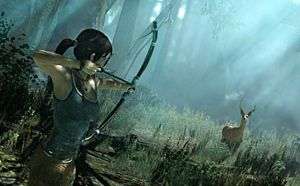 With the collectables, I picked up a couple, including a “Noh” mask and a scripture with some narration…
With the collectables, I picked up a couple, including a “Noh” mask and a scripture with some narration…
Yeah, what I would say about what’s in there right now is that a lot has changed since June. Well, we actually did that demo in April, because we had to do QA to get it ready for E3. A lot of those names have changed, and even after we did that demo I went in and told the guys that some of the names allude to things that actually aren’t in the game, so I wouldn’t go by the names that are in there just yet. I think one was called “Ghost Hunter”, and there’s no ghost hunter in there.
Is there any benefit for players to pick all of those up apart from the completionist aspect?
There will be when the game comes out, there’ll be a lot of collectables with a lot of back-story, but some of the names that are on them right now don’t really make sense. Ignore the names, but in the context of finding them, unlocking stories and finding out what else is going on, there’s a lot of benefit.
Unfortunately, around E3 there was quite a lot of backlash against a particular scene in the demo, and I went through that section, failed at every point and she either gets strangled or shot. Do you think what happened was taken out control by people who didn’t know what was going to happen in that scenario?
I think there’s a few different sides to it. One is, it was definitely that someone misspoke and said a word they shouldn’t have said. Secondly, I think we committed to making a very emotional and visceral journey, and we come across subjects and situations that, when you watch it on TV or in a movie, you feel comfortable watching, but as soon as you put it in the context of a game, it’s a little bit more unsettling. We agree that there is some close, intimidating contact there, but when you play the scene out, as did anybody who did, they all came back and said “I don’t know what they’re getting at”. Yes, I get the feeling, I get that disturbing feeling a little bit, but it doesn’t play out anywhere close to what people have sort of said it did.
Ninety percent of people who wrote about it have never played the game or never seen it, so it’s just unfortunate that it did explode. We’re trying to do something very special inside of our game and we do ride that emotional level very closely, but I think anyone who’s played it has come back and said, yeah, we as a studio may have misspoken, but in terms of the game it does the job we wanted it to do of immersing you into the story of the world very deeply to feel the situation and feel her motivation. You see how she’s pushed into something she’s never been pushed to before.
 |
 |
 |
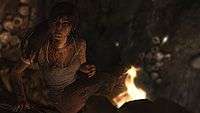 |
 |
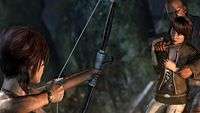 |
Without spoiling anything, is there going to be anything later in the game that’s going to be as divisive as that scene, that when players finish the game, they’ll talk about these ‘key’ moments?
Yeah, I think it’s very important to us that throughout the game there’s these iconic moments that you’ll remember for the rest of the franchise. It was very important to us from day one to say that if we’re going to re-imagine, what do we keep, and what do we sort of push aside. Some of the things that we’ve kept are very traditional Tomb Raider things, I’m not going to mention them because they are spoilers, but it’s very important to us that you finish and you go “I’m going to remember that for the next game and the next game and the next game”. It’s like the moment that Batman got his mask, or James Bond got his first martini; there’s things that you want to come to the fray and say “I remember those moments, they’re iconic”.
Is that attempt going to come back to haunt her in any way? Is that first kill going to haunt her at any key points? Is the story going to be quite psychological in that regard?
I’m not going to give away too much detail on that, but the goal is that through every single situation you come across, it motivates you to the next phase. We don’t want Lara to become a cold-blooded killer and just go around firing bows at everybody, but you also want to realise that she’s nearly been killed, and she’s been forced to have to kill somebody in a totally uncomfortable situation. Two of her friends have been kidnapped, you find out pretty quickly that it may have been Lara’s fault that they’re there in the first place, so you maybe realise that your motivation is to save your friends. Then you have the island and the mystery and you want to get off and these guys who are trying to kill you, and you feel like, I’m not going to stop and talk to them, they’re out to kill me, so everything has to be motivated. You can’t just kind of go in and say “okay, she’s a cold-blooded killer” so those situations, whether it be her first kill or others, heighten the sense of continuing to know why she’s doing what she’s doing, and at no point do you feel like she’s just a cold-blooded killer.
Last five articles by Edward
- Best of 2015: Journey's End: A New Beginning
- Journey's End: A New Beginning
- You Can't Choose Your Happy Ending
- Okay, Let's Fix Comedy In Games - The V-Effekt
- Time Keeps On Smashing Away
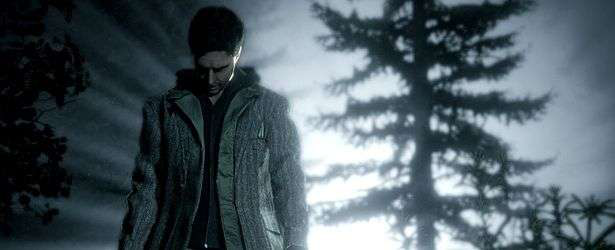

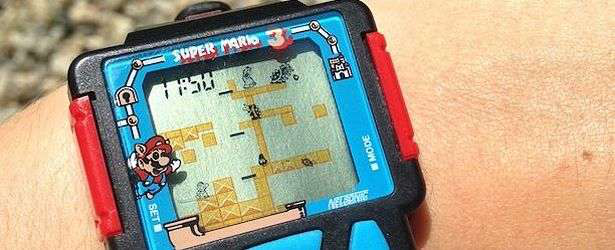



















[...] “It’s very important to us that throughout the game there’s these iconic moments that you’ll remember for the rest of the franchise,” Stewart told GamingLives. [...]
[...] Dynamics brand manager explained the Hub system in detail in an interview with GamingLives, and has revealed that re-exploring areas is actually a positive thing as they want gamers to [...]
[...] glaube, wenn ich die Vorzeichen richtig deute, dass uns da ein famoser Titel erwartet. Gegenüber GamingLives verriet Laras Global Brand Manager Karl Stewart weitere Details, die meine Annahme [...]
[...] remember for the rest of the franchise,” Tomb Raider global brand manager Karl Stewart told GamingLives.It’s very important to us that you finish and you go ‘I’m going to remember that for the next [...]
[...] lavado de cara que recibirá la franquicia, podéis leer la entrevista completa en el siguiente enlace (en inglés). El nuevo ‘Tomb Raider’ se pondrá a la venta a principios del próximo año en [...]
[...] brand manager Karl Stewart shared the news with GamingLives, saying: It’s very important to us that throughout the game there’s these iconic moments that [...]